- Services
Technology Capabilities
Technology Capabilities- Product Strategy & Experience DesignDefine software-driven value chains, create purposeful interactions, and develop new segments and offerings.
- Digital Business TransformationAdvance your digital transformation journey.
- Intelligence EngineeringLeverage data and AI to transform products, operations, and outcomes.
- Software Product EngineeringCreate high-value products faster with AI-powered and human-driven engineering.
- Technology ModernizationTackle technology modernization with approaches that reduce risk and maximize impact.
- Embedded Engineering & IT/OT TransformationDevelop embedded software and hardware. Build IoT and IT/OT solutions.
- Industries
- GlobalLogic VelocityAI
- Insights
BlogsDecember 16, 2024Gene LeybzonAccelerating Digital Transformation with Structured AI Outputs
This code produces the following output that can be imported into the candidate trackin...
 BlogsOctober 30, 2024Yuriy Yuzifovich
BlogsOctober 30, 2024Yuriy YuzifovichAccelerating Enterprise Value with AI
Discover how financial services integrations are transforming from standalone offerings...

- About Us
Press ReleaseGlobalLogicMarch 11, 2025GlobalLogic Launches VelocityAI to Harness the Power of AI, ...
VelocityAI combines advanced AI technologies with human expertise, helping businesses r...
 Press ReleaseGlobalLogicJanuary 10, 2025
Press ReleaseGlobalLogicJanuary 10, 2025GlobalLogic Announces Leadership Change: Srini Shankar Appointed ...
SANTA CLARA, Calif.–January 10, 2025– GlobalLogic Inc., a Hitachi Group Com...

- Careers
Published on December 23, 2022Is Kanzi Really Transforming UI Design?
View all articlesValentina PozzebonShareRelated Content Yuriy Yuzifovich4 March 2025
Yuriy Yuzifovich4 March 2025 GlobalLogic26 February 2025View All Insights
GlobalLogic26 February 2025View All Insights GlobalLogic26 February 2025
GlobalLogic26 February 2025Let's start engineering impact together
GlobalLogic provides unique experience and expertise at the intersection of data, design, and engineering.
Get in touchMobilityWe’ve heard a lot of buzz about Rightware’s Kanzi Studio software. It claims to help designers create beautiful automotive UIs while reducing costs, increasing productivity, and accelerating time-to-market. Its innovative framework could revolutionize the way we look at UI Design.It’s no wonder we decided to check it out – and after reading this blog, you might want to consider Kanzi technology, too.
What is Rightware’s Kanzi Studio?
Kanzi is an open-source software platform that provides developers with tools to develop high-quality applications for the automobile industry.
It provides a comprehensive set of tools for designing interactive cockpit displays and dashboards, including advanced graphics rendering capabilities. Kanzi also includes a powerful scripting engine that enables developers to create custom application logic without writing code.
But it’s not just a framework for cutting-edge automotive HMI development. It is also a toolchain to create entirely seamless 2D/ 3D UIs for intelligent cockpit displays. Kanzi is the only framework that provides a full suite of components, including widgets, dialogs, animations, transitions, gestures, layouts, and visual effects.
Why Rightware’s Kanzi Studio?
As a design and engineering partner to some of the world’s leading automotive original equipment manufacturers, Tier 1 suppliers, and aftermarket service providers, I’ve spent time exploring new technologies that can help elevate our customers’ digital products.
At GlobalLogic, we are especially interested in tools that can enrich and accelerate how we develop in-vehicle HMIs, such as heads-up displays (HUDs), infotainment systems, and instrument clusters.
After all, people expect more from their cars these days. Now, vehicles have to provide a great user experience in addition to a great driving experience.
Since Kanzi has become increasingly popular in the automotive community, we decided to take it for a test drive (so to speak) by developing a new proof-of-concept.
Recommended reading: User Experience as a Key Factor in the Automotive Industry
The Proof-of-Concept
To explore all the features and potential benefits of Kanzi Studio, we decided to design, develop, and test a completely new dashboard and infotainment system for the upcoming BMW i8 series.
We put together a multidisciplinary team consisting of two software engineers, a UX designer, and a Scrum Master to build the PoC. We also simulated the driving experience to test and measure the PoC’s usability with real users.
Then we focused on how to use Kanzi to design unique clusters and dashboards across two different types of interactions: a control panel and a touch screen.
We applied animations, maps, theming, performance profiling, and embedded technology integration to highlight vehicle features and behaviors. We also exported the touchscreen project as an Android app to be used in a demo tablet, and the process was surprisingly simple.
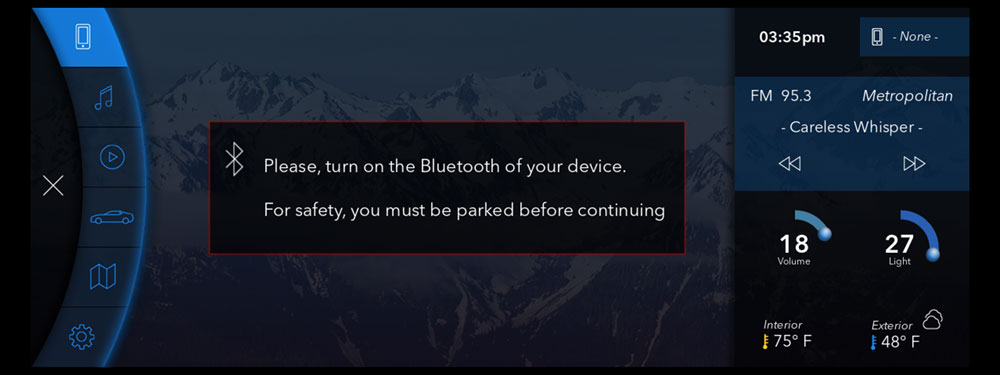
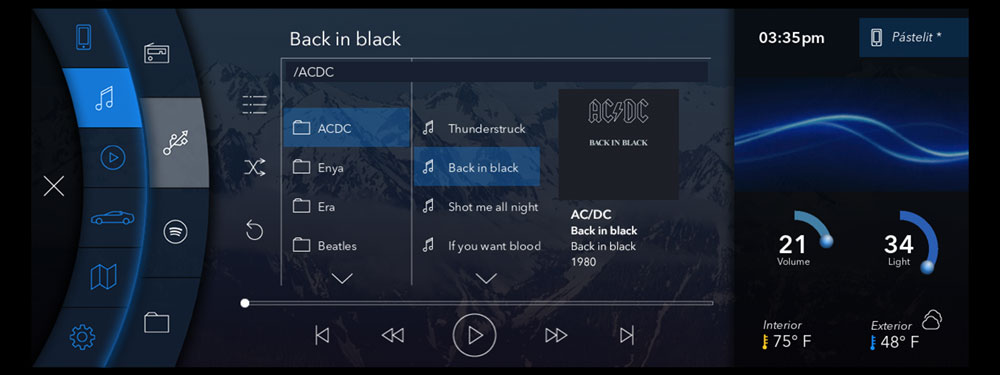
The Experience
Learning and using Kanzi was an excellent experience for the team. Not only is Kanzi an intuitive tool that promotes close integration, but it can help create synergy between developers and designers.
For example, Kanzi allowed us to make on-demand changes and test the product in its early stages. This meant we could quickly address development and design issues as they occurred.
It became natural to see designers and developers working together on the same computer in a sort of “paired programming” way — making adjustments to the product’s behavior and look in just a few minutes.
There were also practically zero lines of code involved in implementing the UI designs. We used Kanzi’s built-in UI design tool, and the job was almost done.
We dragged and dropped images into Kanzi, which converted them into assets that we could use in a UI component and see it running instantly. It was also effortless to add transition effects, animations, and image blendings to achieve the user experience we envisioned.
Recommended reading: Empowering Teams with Agile Product-Oriented Delivery, Step By Step
Every time we were unsure how to implement some special requirement (like triangle-shaped indicators), we just guessed that Kanzi might already support it — and we were always delighted to see that it did!
Even if Kanzi didn’t support the requirement precisely as we envisioned, it did still support the requirement in an identical way — like the alpha channel masked components that we ended up using.
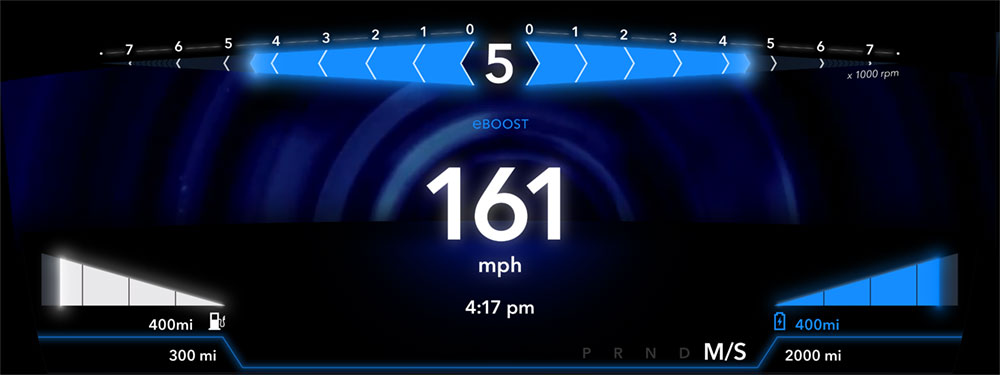
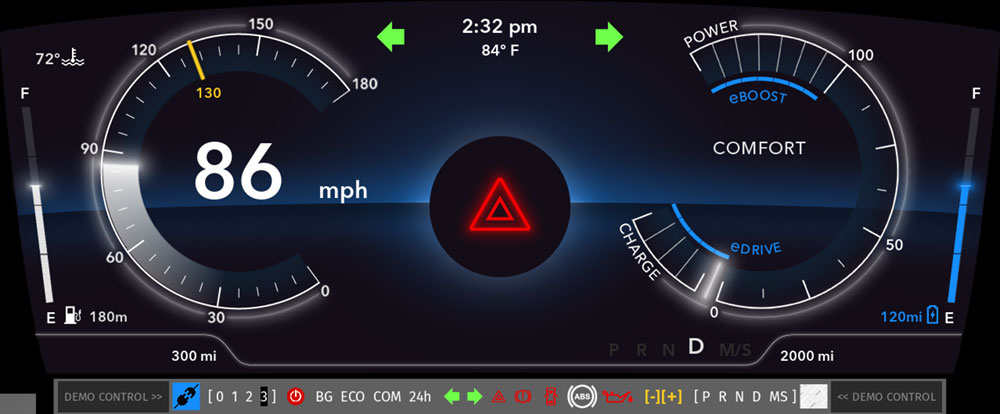
Understanding how Kanzi executes tasks was very straightforward. It follows a natural interface while including some additional elements needed to work within a 3D environment and manage the specific demands of different target platforms.
For example, working in a 3D environment is intuitive since it follows the usual standards and the familiar concepts in most 3D editors like 3D-Studio or Blender. You can also find the same operations as 3D visualization tools like Maya or even Unreal Engine.
Coming from an Android development background and using Android Studio, our team also found it easy to work with Kanzi’s interface to add code into behaviors.
We also found it easy to work with variables, include code for the transitions, and generate the project binaries. One remarkable feature is the drag-and-drop approach to map variables, which makes sharing values all the easier.
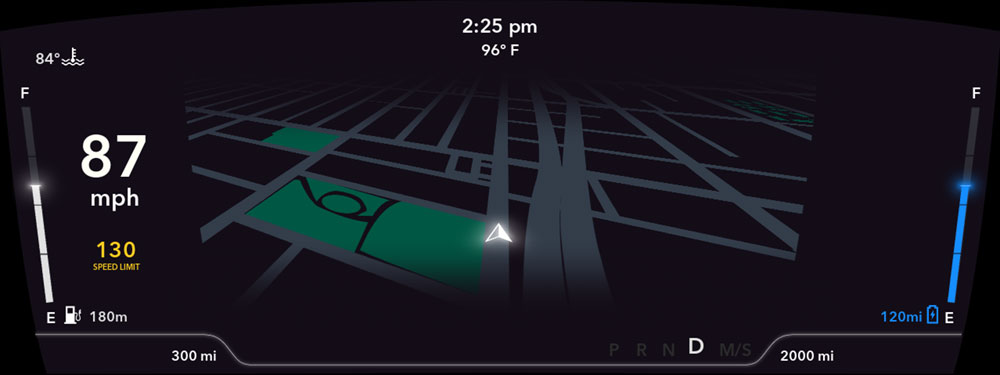
Final Takeaways
Kanzi Studio is a great solution that combines a well-executed, built-in UI tool with powerful technology. We were incredibly impressed with how seamlessly it allows developers and designers to share their work with a singular focus.
In fact, many European automotive companies are already showing interest in working with GlobalLogic on future projects based on our Kanzi POC. Kanzi Studio is a must-have tool for any automotive development project that prioritizes engaging and intuitive user experiences.
Learn More:
